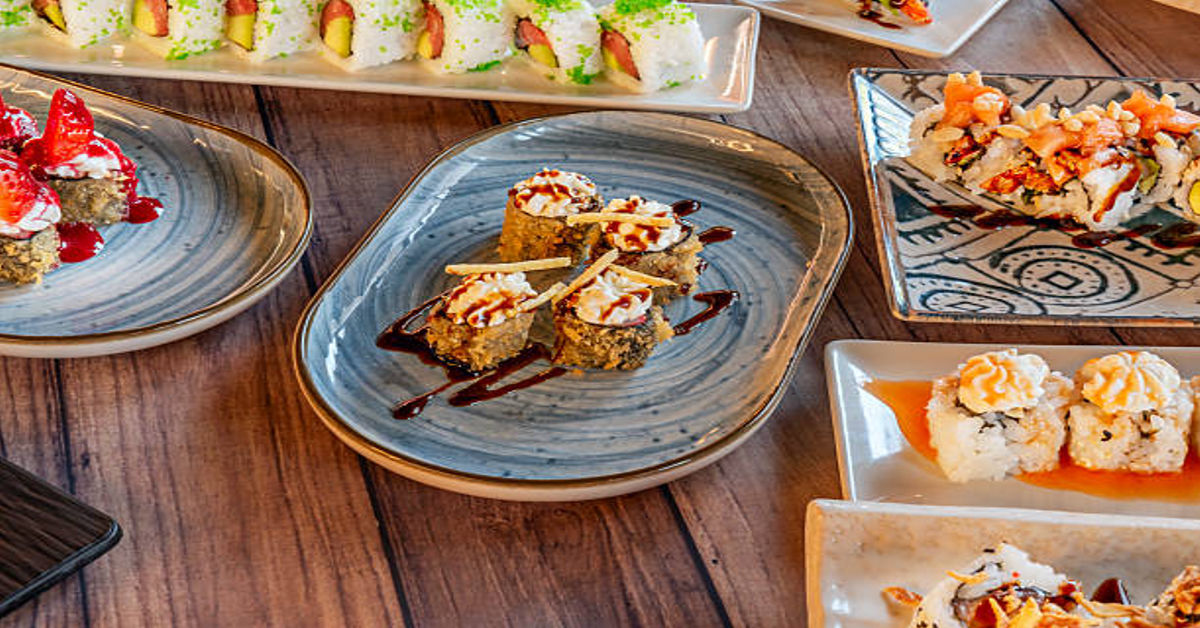Tobiko is one of the most visually captivating and texturally delightful ingredients found in Japanese cuisine, especially in sushi. Recognized by its vibrant colors and crisp popping texture, tobiko is the roe (eggs) of the flying fish, a species known for its gliding ability over ocean waves. While many people encounter tobiko first as a topping on sushi rolls, its significance and versatility extend far beyond that. In this comprehensive guide, we will explore everything there is to know about tobiko — from its biological origins and processing to its nutritional profile, culinary applications, health benefits, varieties, and cultural importance.
1. Understanding Tobiko: What It Really Is
Tobiko (とびこ) literally translates to “flying fish roe” in Japanese. The word is a combination of “tobi” meaning “fly” and “ko” meaning “child” or “egg.” It is harvested from several species of flying fish, most commonly from the family Exocoetidae, which are small, silvery fish found in warm ocean waters around the world.
The roe is collected, cleaned, and lightly salted to preserve it. Tobiko has a characteristic crunch that sets it apart from other types of fish roe like ikura (salmon roe) and masago (capelin roe). The size of each egg ranges from 0.5 to 0.8 millimeters, making it slightly larger than masago but smaller than ikura.
Tobiko is naturally orange-red in color, though it is often dyed using natural ingredients to produce various hues for decorative and flavor-enhancing purposes. Despite being a small component of sushi dishes, tobiko adds vibrant visual contrast, bursts of briny flavor, and an enjoyable texture that complements other ingredients beautifully.
2. The Biological Source: The Flying Fish
Flying fish are fascinating marine creatures capable of gliding above the water’s surface. They have elongated pectoral fins that act like wings, allowing them to escape predators by leaping out of the water and gliding for impressive distances. There are more than 60 species of flying fish, most of which inhabit tropical and subtropical ocean regions.
Females deposit their eggs on floating seaweed or debris near the ocean’s surface. These eggs have sticky filaments that help them attach to floating objects, making collection relatively straightforward for fishers. Once harvested, the eggs are washed, sieved, and cured with salt to enhance flavor and shelf life.
3. Tobiko vs. Masago vs. Ikura: Understanding the Differences
To many sushi lovers, tobiko may appear similar to other types of roe used in Japanese cuisine, such as masago and ikura. However, each of these has distinct characteristics in terms of size, texture, flavor, and culinary use.
| Feature | Tobiko (Flying Fish Roe) | Masago (Capelin Roe) | Ikura (Salmon Roe) |
|---|---|---|---|
| Fish Source | Flying Fish (Exocoetidae) | Capelin (Mallotus villosus) | Salmon (Oncorhynchus spp.) |
| Egg Size | 0.5–0.8 mm | 0.4–0.6 mm | 4–6 mm |
| Color (Natural) | Orange-red | Pale yellow | Deep orange |
| Texture | Crisp and crunchy | Softer and finer | Juicy and delicate |
| Flavor | Mildly salty, smoky, and oceanic | Subtle, less flavorful | Rich, buttery, and briny |
| Common Use | Sushi topping, garnishes | Sushi, sauces, blends | Nigiri sushi, donburi bowls |
Tobiko occupies a middle ground between the delicate masago and the luxurious ikura, offering both aesthetic appeal and a balanced texture.
4. Processing and Preparation of Tobiko
Once the eggs are harvested from flying fish, they undergo several steps before reaching your sushi plate:
- Collection: The eggs are collected during spawning season when flying fish lay adhesive eggs on floating materials.
- Cleaning: The raw roe is gently washed in saltwater to remove impurities and membranes.
- Curing: The eggs are salted or lightly cured in a saline solution. This process helps preserve the eggs and brings out their natural umami flavor.
- Coloring and Flavoring: Natural ingredients are sometimes added for variation in color and taste.
- Packaging: After curing, tobiko is refrigerated or frozen to maintain freshness.
5. Natural Colors and Flavors of Tobiko
Tobiko’s natural color is bright orange, but Japanese chefs often infuse it with natural flavorings or dyes to enhance presentation and add subtle flavor variations. The most popular colored tobiko varieties are:
| Color | Flavoring Ingredient | Flavor Profile | Use in Cuisine |
|---|---|---|---|
| Orange (natural) | None | Mildly salty and oceanic | Default sushi topping |
| Black | Squid ink | Slightly richer and earthy | Used for dramatic contrast in dishes |
| Green | Wasabi | Spicy and tangy | Adds heat to sushi rolls |
| Red | Beet or chili | Sweet or mildly spicy | For color contrast |
| Yellow/Gold | Yuzu or citrus | Citrusy, aromatic | Used in modern sushi fusion dishes |
These variations allow chefs to create visual masterpieces on sushi platters while introducing nuanced flavors that elevate the dining experience.
6. The Role of Tobiko in Japanese Cuisine
In Japan, tobiko is appreciated not only for its taste and texture but also for its visual appeal. The bright orange eggs symbolize festivity and abundance. Tobiko’s versatility makes it an essential element in various Japanese dishes, both traditional and contemporary.
Common Culinary Uses:
- Sushi Rolls: Tobiko is often used to coat the outer layer of sushi rolls (e.g., California roll or Dragon roll), adding crunch and color.
- Nigiri Sushi: A small mound of sushi rice topped with tobiko and wrapped in seaweed is a common sushi bar item.
- Sashimi Garnish: Used as a colorful topping for sashimi platters.
- Japanese Salads: Mixed with mayonnaise or other dressings to create creamy, flavorful salads.
- Appetizers: Used in canapés, omelets, or seafood cocktails to add a touch of elegance.
- Sauces and Dressings: Occasionally incorporated into creamy sauces for seafood pasta or fusion dishes.
7. Nutritional Profile of Tobiko
Tobiko is not just a treat for the palate — it’s also a nutrient-rich food that offers several health benefits. It’s low in calories and carbohydrates but high in protein, omega-3 fatty acids, and essential vitamins.
| Nutrient | Approx. Value (per 100g) | Health Benefit |
|---|---|---|
| Calories | 70–80 kcal | Low-calorie food option |
| Protein | 12–13 g | Supports muscle repair and growth |
| Fat | 3–4 g | Contains healthy fats |
| Omega-3 Fatty Acids | ~1 g | Promotes heart and brain health |
| Cholesterol | ~400 mg | Essential for hormone synthesis (consume moderately) |
| Vitamin B12 | High | Vital for nerve and blood health |
| Vitamin D | Moderate | Supports bone health |
| Selenium | Present | Powerful antioxidant |
| Sodium | 200–300 mg | Necessary for hydration and nerve function (watch intake) |
Tobiko is a nutrient-dense food, but like other seafood roe, it should be consumed in moderation due to its sodium and cholesterol content.
8. Health Benefits of Tobiko
Tobiko’s nutrient profile translates into several potential health benefits when consumed responsibly as part of a balanced diet:
1. Supports Heart Health
The omega-3 fatty acids in tobiko help reduce inflammation and lower triglyceride levels, contributing to a healthy cardiovascular system. Regular intake of omega-3s can also help regulate blood pressure and decrease the risk of heart disease.
2. Enhances Brain Function
Omega-3 fatty acids, especially DHA, are essential for brain development and cognitive function. The vitamin B12 in tobiko further supports neural health and may reduce the risk of cognitive decline.
3. Boosts Immunity
Tobiko contains selenium and vitamin D, both of which are known to strengthen the immune system and protect cells from oxidative stress.
4. Promotes Skin Health
The healthy fats and antioxidants present in tobiko can contribute to skin elasticity and hydration, helping to maintain a youthful appearance.
5. Provides Lean Protein
For those seeking a high-protein, low-calorie food, tobiko is an excellent option. It provides the amino acids necessary for muscle recovery, tissue repair, and enzyme production.
9. Culinary Techniques and Tips for Using Tobiko
Tobiko’s delicate texture requires careful handling to preserve its natural crispness and flavor. Here are some tips for working with tobiko in your kitchen:
- Storage: Keep tobiko refrigerated at temperatures between 0°C and 4°C. Once opened, consume it within a few days.
- Freezing: Tobiko can be frozen for up to 3 months without significant loss of quality. Thaw it slowly in the refrigerator before use.
- Serving Temperature: Serve chilled to maintain freshness and texture.
- Pairings: Tobiko pairs beautifully with avocado, cucumber, crab, tuna, and mayonnaise-based sauces.
- Fusion Ideas: Add tobiko to deviled eggs, pasta dishes, or sushi burritos for a creative twist.
10. Tobiko in Global Cuisine
While tobiko is rooted in Japanese tradition, it has found its way into various international culinary contexts. In Western countries, tobiko often appears in fusion dishes such as sushi tacos, poke bowls, and even gourmet pizzas. Its combination of salty flavor and crunchy texture complements creamy and neutral ingredients, making it versatile across cuisines.
Chefs in upscale restaurants use tobiko as an edible garnish to add both sophistication and a pop of color to seafood dishes. It’s also gaining popularity in Korean cuisine, where it’s used in rice rolls (gimbap) and spicy seafood salads.
11. Sustainability and Ethical Considerations
The increasing global demand for tobiko has led to concerns about sustainable sourcing. Overfishing of flying fish in some regions may disrupt marine ecosystems. Responsible suppliers have started to implement measures to ensure ethical harvesting and sustainable aquaculture practices.
Consumers can contribute by purchasing tobiko from brands that emphasize sustainability and traceability. Look for certifications or supplier transparency that confirm ethical sourcing methods.
12. Tobiko Substitutes and Alternatives
For individuals with dietary restrictions or sustainability concerns, several substitutes for tobiko can be used:
| Alternative | Source | Characteristics |
|---|---|---|
| Masago | Capelin roe | Smaller eggs, milder flavor |
| Vegan Tobiko | Seaweed-based (agar or tapioca pearls) | Plant-based, cruelty-free, similar texture |
| Caviar | Sturgeon or other fish | Richer and saltier flavor |
| Mock Roe | Made from gelatin and flavorings | Inexpensive imitation option |
Vegan tobiko, often made from agar or tapioca starch, mimics the popping sensation of real tobiko and is flavored with seaweed extract for authenticity.
13. Cultural Significance and Symbolism
In Japanese culture, roe is often associated with prosperity, fertility, and celebration. Tobiko, with its bright colors and association with abundance, is often served at festive occasions and sushi feasts. The shimmering appearance of tobiko is also symbolic of vitality and joy, making it an auspicious ingredient in culinary traditions.
14. Possible Concerns and Precautions
While tobiko is nutritious, there are a few considerations to keep in mind:
- Sodium Content: Tobiko can be high in salt due to curing. Individuals with hypertension should consume it sparingly.
- Cholesterol: Fish roe contains dietary cholesterol, so moderation is key for those managing cholesterol levels.
- Allergies: People allergic to fish or seafood should avoid tobiko.
- Pregnancy: Pregnant women should only consume pasteurized tobiko to minimize the risk of bacterial contamination.
15. Tobiko Recipes to Try at Home
Here are some easy ideas for incorporating tobiko into your meals:
A. Tobiko Sushi Rolls
Combine crab meat, avocado, and cucumber in a nori sheet with rice, then roll and coat the outside with tobiko for color and crunch.
B. Tobiko Pasta
Mix cooked pasta with cream, garlic, and soy sauce, then toss with tobiko just before serving for a creamy umami twist.
C. Tobiko Mayo Dip
Blend mayonnaise, lemon juice, and tobiko for a dipping sauce perfect for seafood tempura or fries.
D. Tobiko Rice Bowl
Serve steamed rice topped with tobiko, avocado, sesame seeds, and a drizzle of soy sauce for a quick and nutritious meal.
16. Storage and Shelf Life
Proper storage is crucial to maintaining tobiko’s quality and freshness.
| Condition | Storage Duration | Recommendation |
|---|---|---|
| Refrigerated (Unopened) | Up to 3 months | Store at 0–4°C |
| Refrigerated (Opened) | 3–4 days | Use quickly for best texture |
| Frozen | 2–3 months | Thaw slowly in fridge |
Never refreeze tobiko after thawing, as this will degrade its texture.
17. Economic and Culinary Value
Tobiko is considered a luxury ingredient but remains more affordable than caviar or salmon roe. Its appeal lies in its ability to enhance the sensory experience of food — it adds color, sound (the crunch), and taste, making dishes visually stunning and texturally interesting.
High-end restaurants often use tobiko sparingly, treating it like edible jewelry on a dish. In contrast, everyday sushi shops use it more liberally to elevate rolls and salads.
18. Conclusion
Tobiko is far more than just a sushi topping. It’s a culinary gem that embodies the artistry and balance of Japanese cuisine — combining color, texture, and taste in perfect harmony. From its natural oceanic origin to its role on the modern dining table, tobiko bridges tradition with innovation. Nutritionally rich and versatile, it can enhance a wide range of dishes while providing valuable nutrients like omega-3s and vitamin B12.
However, like all delicacies, tobiko is best enjoyed in moderation and sourced responsibly to protect marine ecosystems. Whether you savor it atop a sushi roll, in a creamy pasta, or as a creative garnish, tobiko offers a sensory experience that connects you to the sea’s essence in every tiny, glistening pearl.
Frequently Asked Questions (FAQs)
1. What is tobiko made from?
Tobiko is made from the eggs (roe) of flying fish. These eggs are harvested, cleaned, lightly salted, and sometimes flavored or colored using natural ingredients.
2. How does tobiko taste?
Tobiko has a mildly salty, slightly smoky flavor with a hint of sweetness and a satisfying crunchy texture that pops when eaten.
3. Is tobiko healthy to eat?
Yes. Tobiko is high in protein, omega-3 fatty acids, and vitamin B12. It’s a nutrient-rich food but should be eaten in moderation due to sodium and cholesterol levels.
4. Can tobiko be eaten raw?
Yes, tobiko is typically served raw in sushi and sashimi dishes. However, it’s cured or salted to ensure safety and extend shelf life.
5. What is the difference between tobiko and masago?
Tobiko comes from flying fish and is larger and crunchier, while masago is from capelin and has smaller, softer eggs with a milder flavor.









